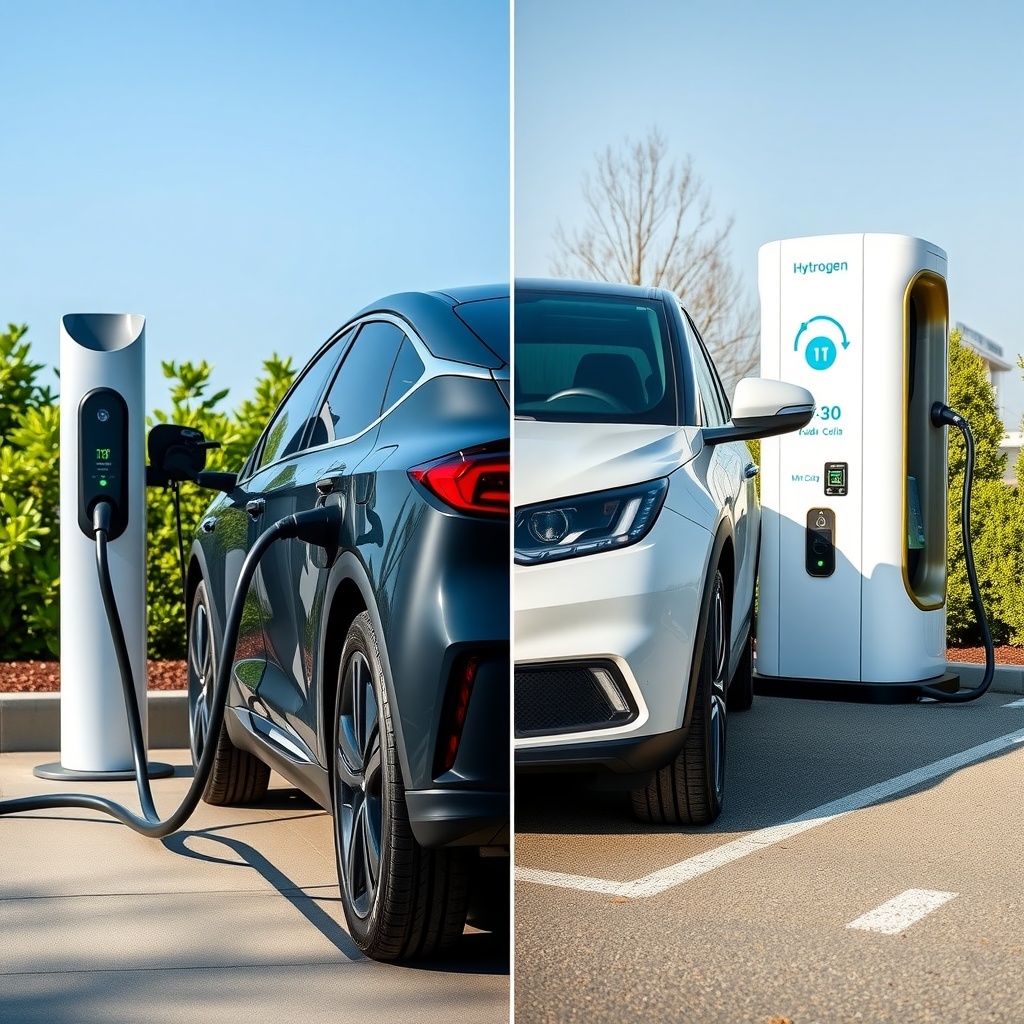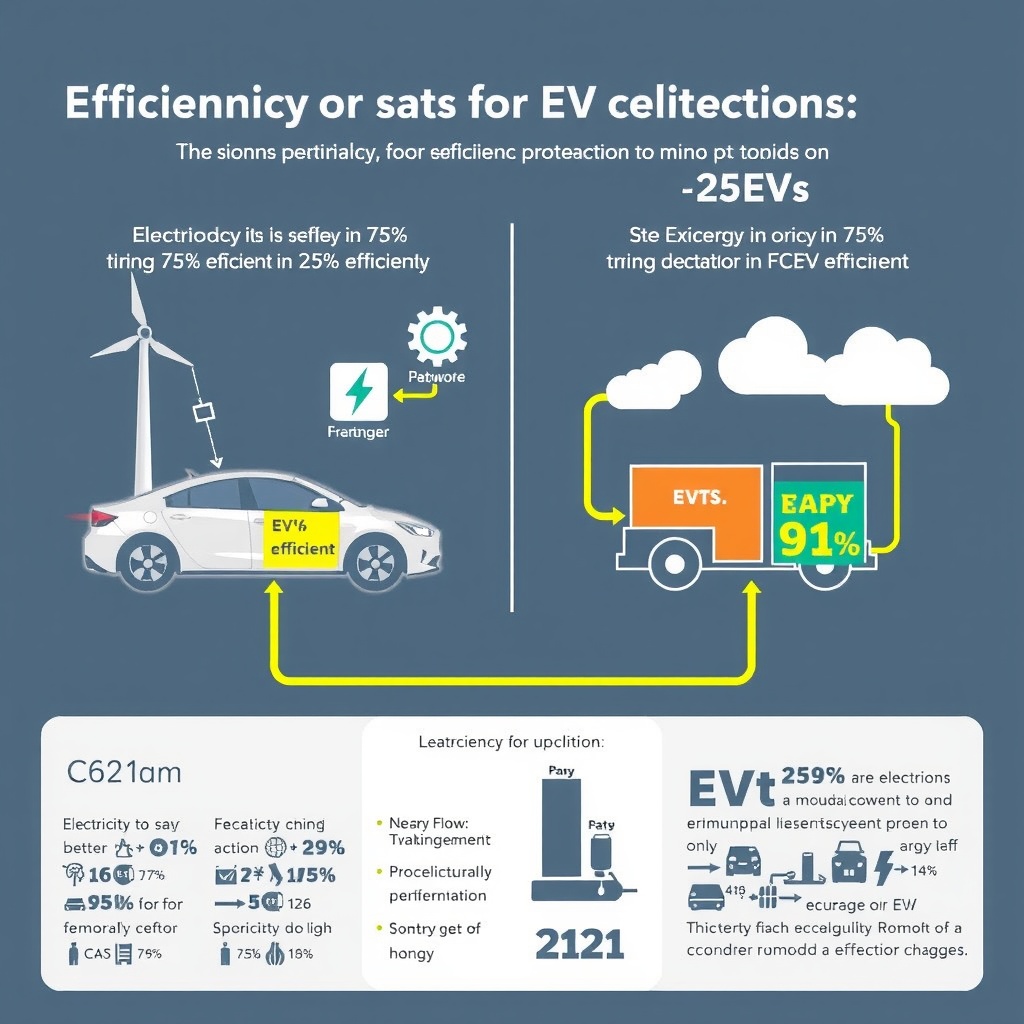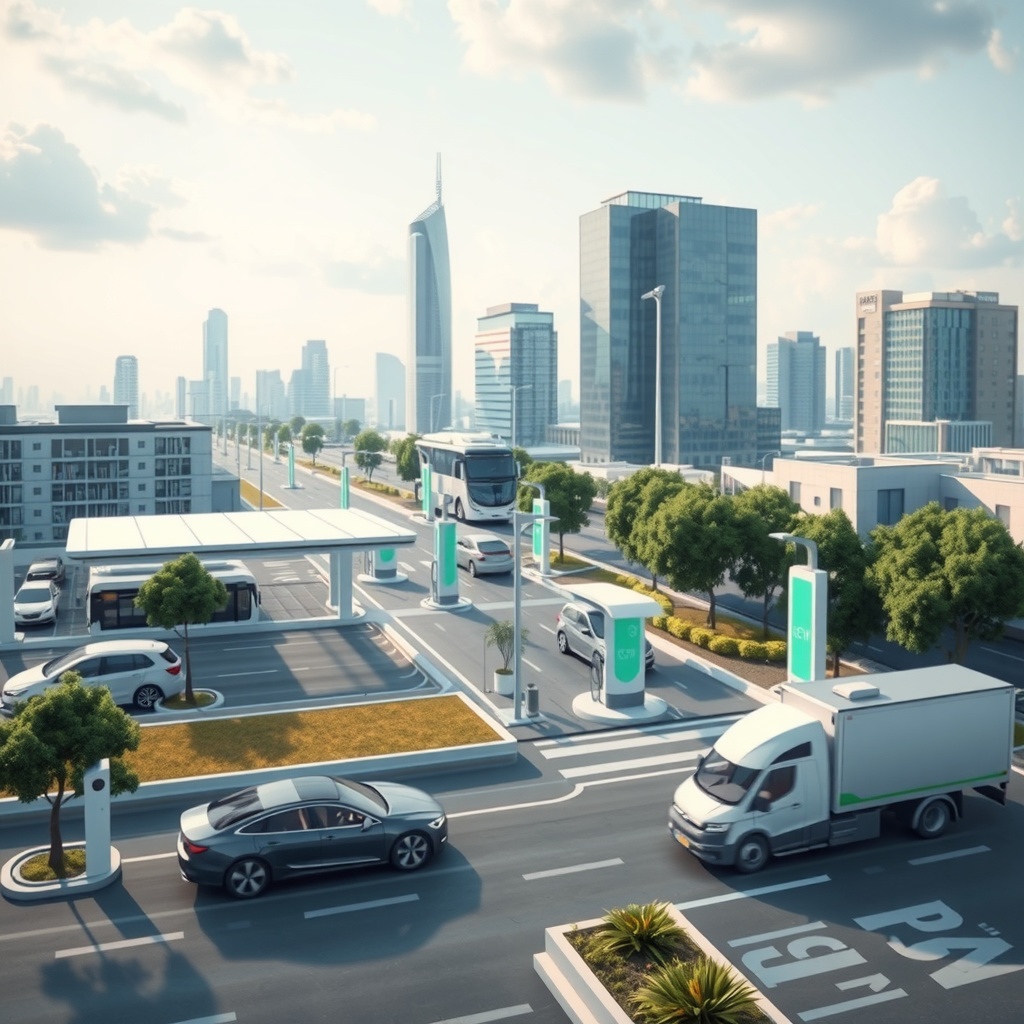
EVs dominate zero-emission sales while hydrogen vehicles show 43.7% growth potential through 2037. The showdown balances EV efficiency against hydrogen's faster refueling capabilities.

Drivetech Partners
The battle between electric and hydrogen vehicles has intensified, with EVs currently dominating the zero-emission market while hydrogen technology shows promising growth potential. Electric vehicles have captured nearly a quarter of U.S. retail sales, yet hydrogen vehicles are projected to grow at an impressive 43.7% CAGR through 2037, setting the stage for a technological showdown reminiscent of the historic VHS versus Betamax rivalry.
Key Takeaways
Electric vehicles now represent 24.4% of U.S. retail sales, while hydrogen vehicles are projected to grow from $2.68 billion to $228.4 billion by 2037
EVs are significantly more energy efficient (75%) compared to hydrogen fuel cell vehicles (25%)
Hydrogen vehicles offer faster refueling (3-5 minutes) compared to EVs (30+ minutes for fast charging)
Infrastructure remains a critical barrier for hydrogen adoption with only 62 U.S. refueling stations versus 64,000 EV charging stations
Both technologies will likely coexist in specialized niches rather than one completely replacing the other

Current Market Dominance: EVs Leading the Zero-Emission Revolution
The electric vehicle market has seen remarkable growth in recent years. According to The EV Report, sales reached 750,698 units in Q1 2025, capturing 24.4% of U.S. retail sales. This represents a significant 29.6% year-over-year increase for the quarter.
Hybrid electric vehicles (HEVs) have experienced the strongest growth at 44.1%, suggesting many consumers are choosing this transitional technology as they move away from traditional combustion engines. Compact SUVs have emerged as the most popular EV segment, holding 5.9% of all vehicle sales.
California continues to lead in EV adoption despite a 3% drop in battery electric vehicle sales, while Washington has joined the top five states for EV adoption. These trends clearly indicate that battery electric vehicles currently have a substantial market advantage over hydrogen vehicles.

The Underdog: Hydrogen's Market Position and Growth Potential
While currently trailing behind EVs, the hydrogen vehicle market shows promising growth potential. Research Nester values the global hydrogen vehicle market at USD 2.68 billion in 2025, with projections to reach USD 228.4 billion by 2037. This represents an impressive CAGR of around 43.7% over the 2025-2037 period.
Global hydrogen car sales grew by 8.8% in 2022, reaching 16,195 units. While these numbers pale in comparison to EV sales, the growth trajectory suggests increasing market interest. Demand for low-carbon hydrogen from transport is projected to increase to 6TWh by 2030.
Despite this potential, hydrogen vehicles face significant infrastructure barriers compared to EVs, which will be a crucial factor in determining whether they can gain substantial market share or remain a niche solution.
Efficiency Showdown: Battery vs. Fuel Cell Technology
When comparing the core technologies, there are fundamental differences in how energy is converted and used. Battery electric vehicles (BEVs) rely on lithium-ion batteries for power, while hydrogen cars use hydrogen fuel cells for electricity generation.
The efficiency difference is substantial. EVs convert nearly 75% of energy into motion, making them three times more efficient than hydrogen fuel cell vehicles (HFCEVs), which are only about 25% energy efficient. MIT Climate Portal explains this efficiency gap by noting the simplicity of EVs' electrical conversion in their motors versus hydrogen cars' multiple energy-intensive processes including pressurization and electrolysis.

Battery technology continues to improve at a rapid pace, addressing previous concerns about range and charging times. This ongoing innovation gives EVs an additional competitive advantage in the efficiency arena.
Range and Refueling: The Convenience Factor
Range anxiety and refueling convenience remain important factors for consumers. The Toyota Mirai hydrogen car offers impressive range of 357-402 miles, exceeding most electric vehicles which typically provide 200-250 miles of range.
The most significant advantage hydrogen vehicles offer is refueling speed. Hydrogen cars can refuel in 3-5 minutes, comparable to traditional gasoline vehicles. In contrast, EVs require 30+ minutes for fast charging (typically 10-80% of battery capacity) and several hours for complete home charging.
However, infrastructure availability heavily favors electric vehicles. The U.S. has only 62 hydrogen refueling stations compared to 64,000 EV charging stations. This vast disparity in infrastructure represents perhaps the most significant hurdle for hydrogen vehicle adoption.
The Cost Equation: Purchase and Operational Expenses
Cost considerations span both initial purchase price and ongoing operational expenses. Hydrogen cars are generally more expensive to purchase than comparable electric vehicles, creating a barrier to entry for many consumers.
The difference in refueling costs is equally substantial. Hydrogen refueling costs range from £70-£120 ($87-$150) per tank according to Carwow. In contrast, EV charging at home on special tariffs can cost less than £5 ($6.25) for a full charge, with electricity costs for home charging as low as 7p (9¢) per kWh.
Government policies and incentives will continue to influence the market development for both technologies. Tax credits, rebates, and other financial incentives can significantly impact consumer choices and market growth trajectories.
Infrastructure Challenges and Solutions
Both technologies face infrastructure challenges, though of different types. Grid dependency creates strain for EV charging infrastructure during peak demand periods, while EVs also face limited charging locations in remote areas.
Plug Power suggests an interesting hybrid solution: hydrogen fuel cells can generate electricity on-site for EV charging. These hydrogen-powered chargers could reduce dependence on the electrical grid, while on-site hydrogen generation enables charging in areas where grid expansion is difficult or cost-prohibitive.
Infrastructure development will be critical for both technologies' success. The current advantage clearly belongs to EVs, but targeted hydrogen infrastructure development could help close this gap in specific regions or use cases.
Environmental Considerations: Beyond Zero Emissions
While both technologies produce zero tailpipe emissions, with hydrogen vehicles emitting only water vapor as a byproduct, the full environmental impact depends on energy sources used for electricity and hydrogen production.
Hydrogen has a higher energy-to-weight ratio than batteries, which can be advantageous for certain applications. However, the manufacturing processes and resource extraction have different environmental footprints for each technology.
Critical Debates HSGJ notes that the most environmentally beneficial approach depends on specific use cases and local energy sources. In areas with abundant renewable energy, both technologies can offer significant environmental benefits compared to fossil fuel vehicles.

Future Applications: Finding Their Niche
By 2030, hydrogen is expected to be used across various transport modes including cars, buses, large goods vehicles, and rail. Early stage applications are emerging in commercial shipping and aviation, areas where battery weight and energy density limitations pose challenges.
Industrial and heavy transport applications may favor hydrogen technology due to its energy density and quick refueling capabilities. The passenger vehicle market, however, continues trending toward battery electric solutions for their efficiency and established infrastructure.
Unlike the VHS versus Betamax battle of the past, both zero-emission technologies may coexist rather than compete directly. Each technology appears to be finding its niche based on specific use cases and applications rather than one fully replacing the other.
The future transportation landscape will likely feature a mix of technologies optimized for different needs—electric vehicles dominating personal transportation and urban delivery, while hydrogen finds its place in long-haul, heavy duty, and specialized applications where its unique properties offer distinct advantages.
Sources
Bacancy Systems - Hydrogen vs Electric Cars
Edmunds - Hydrogen vs Electric Cars
MIT Climate Portal - Why Have Electric Vehicles Won Out Over Hydrogen Cars So Far
Carwow - Hydrogen vs Electric Cars
Critical Debates HSGJ - Electric Vehicles vs Hydrogen Cars: A Question of the Future
The EV Report - Electrified Vehicle Sales Soar in Q1 2025
Research Nester - Hydrogen Vehicle Market
Plug Power - How Hydrogen Fuel Cells Are Transforming EV Charging Infrastructure






